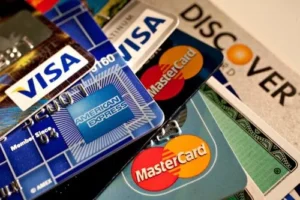Balance Transfer Cards: how they work and when to use them
Discover how credit cards with balance transfer work, when to use them, and how they can help you save money on interest.
All About Credit Cards with Balance Transfer

We’ve all been there. You open your credit card bill, and that balance just seems to never go down. You’ve been making payments, but between interest charges and life happening, it feels like running on a treadmill, lots of effort, not much progress.
If this sounds familiar, don’t worry, you’re not alone. And better yet, there’s a tool that might actually help you catch your breath financially: balance transfer credit cards.
It might sound like financial jargon at first, but the concept is actually pretty simple and surprisingly useful if you use it the right way.
So, What Exactly Is a Balance Transfer Card?
A balance transfer card is a type of credit card that lets you move the balance from one or more of your existing credit cards over to a new one, usually with a low or even 0% introductory interest rate for a certain period of time.
That’s the key part: the low or zero interest. It’s like hitting pause on your interest charges for a while.
Imagine you owe $5,000 on a card charging you 20% interest. Every month, a good chunk of your payment is just covering the interest, not the actual debt.
Now, if you move that balance to a card offering 0% interest for, say, 18 months, every penny you pay goes straight to the balance. That’s real progress.
Is It Too Good to Be True?
It does sound a little magical, doesn’t it? But there are a few things you need to keep in mind before jumping in.
First, most balance transfer cards charge a transfer fee, usually around 3% to 5% of the amount you’re moving.
So if you’re transferring $5,000, that could mean a $150–$250 fee up front. Still, if you do the math, you might end up saving way more than that in interest over time.
Also, the 0% rate doesn’t last forever. Once that intro period is up, the interest rate will jump—sometimes quite a bit.
So, it’s really important to have a plan. Ideally, you want to pay off the entire balance before the promo period ends. Otherwise, you might find yourself back in the same boat.
When Does It Make Sense to Use One?
Balance transfer cards aren’t for everyone, but there are some clear situations where they can make a lot of sense.
If you’re stuck with a big balance on a high-interest card and feel like you’re barely making a dent, that’s a good sign it might be time to consider a transfer.
Especially if you have a decent credit score, because the better your credit, the better the offers you’ll qualify for.
It’s also a smart move if you’re confident you can pay off the debt within the promo period. Treat it like a short-term loan from yourself: you’re getting a break on the interest, but you still have to hold yourself accountable.
What it’s not great for? Using as a way to extend credit while continuing to spend like crazy. A balance transfer card isn’t a fix for bad financial habits, it’s more like a second chance to clean things up.
How to Make the Most of It
Here’s the real trick: discipline. Once you’ve moved your balance to the new card, avoid adding new charges to it. You want every dollar you pay to go toward your debt, not new spending.
And definitely, don’t miss a payment. A lot of these cards have fine print that says if you’re even a day late, your 0% promo rate can vanish, and the high interest kicks in immediately.
Final thoughts
If you’re feeling overwhelmed by credit card debt, a balance transfer card can be a powerful tool to take back control. It gives you breathing room and a chance to actually make progress instead of spinning your wheels.
But like any financial tool, it works best when used with a plan. Be realistic about your habits, read the fine print, and stay committed to paying it off before that promo rate disappears.
In the end, it’s not just about paying off debt, it’s about giving yourself the space and clarity to move forward. Because money stress? Nobody needs more of that.
So if you’re thinking, “Maybe this is my way out,”, you might be onto something. Just make sure you’re ready to take that step with your eyes wide open.






